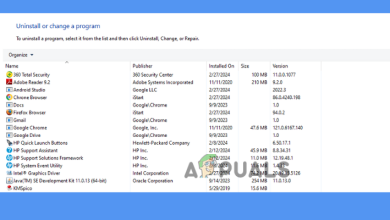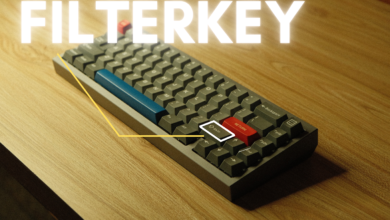How to Check if a File or Program is 32-Bit or 64-Bit on Windows 10?
Installing programs on Windows has been getting increasingly easier in these past years (especially with the launch of Windows 10). But with some programs, it’s still important that you install the right binary type of the program version. Depending on your Windows architecture (32-bit or 64-bit), you will want to install applications versions that fully compatible with the default binary type that your Windows version is built around.

If you have a 64-bit Windows version, you should always look to install 64-bit binary type applications since they will perform better on your computer. However, 64-bit applications will not function properly on 32-bit Windows versions.
Because of this, Windows users are looking for ways to discover their Windows architecture type and figure out if the applications they installed are 64-bit or 32-bit.
If you’re one of them, this article will clear the confusion. Start by following the guide below to discover your OS architecture. After you find that out, follow any of the methods below that will allow you to discover if the file or program is of 32-bit or 64-bit.
Let’s get started!
How to Find Out your Windows Architecture?
Before you start testing out the different ways of discovering the binary type of a program, it’s important to start by double-checking your Windows installation architecture. This will allow you to ensure that you’re always installing the best binary version of the apps that make their way on your computer.
Note: If you’re already certain of your windows architecture, move down directly to the ‘How to Check if Program or File is 32-bit or 64-bit‘ section.
There are multiple ways that will allow you to find out if you have a 32-bit or 64-bit Windows installation. But for the sake of keeping things simple, we’re only going to feature two different approaches – finding our Windows architecture via GUI or via CMD.
Feel free to follow whichever guide you feel more comfortable with:
1. Finding out the WIndows Architecture via Windows Menu
- Open File Explorer, right-click on This PC and choose Properties from the newly appeared context menu.
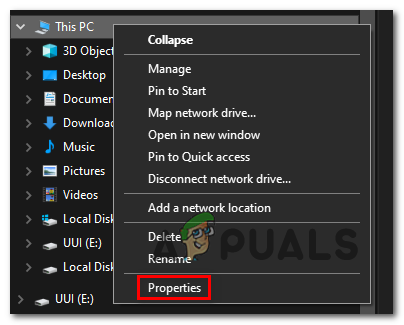
Accessing the Properties screen - Once you’re inside the Basic Information Properties screen, look on the right-hand side menu of the screen and check the System type (under System).
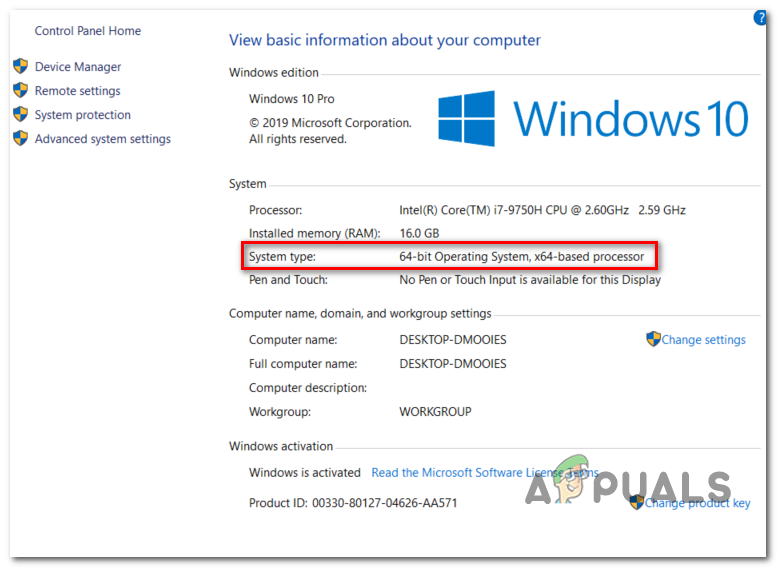
Discovering the System Architecture type If it shows a 64-bit Operating system, that’s your Windows architecture.
Note: If you have an x64-based processor, it makes no sense to install a 32-bit Windows version since you’ll end up limiting the performance of your computer.
2. Finding out the Windows Architecture via CMD
- Press Windows key + R to open up a Run dialog box. Next, type ‘cmd’ inside the text box and press Ctrl + Shift + Enter to open up an elevated CMD prompt. When you’re prompted by the User Account Control, click Yes to grant administrative privileges.

Running the Command Prompt - Once you’re inside the elevated Command Prompt, type the following command and press Enter to reveal your current OS architecture:
wmic OS get OSArchitecture
- Look at the line under OSArchitecture: 64-bit or 32-bit – That is your current Windows architecture.
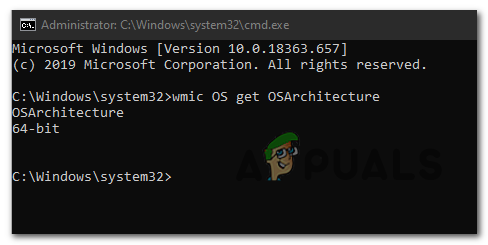
Getting the current OSarchitecture
How to Check if Program or File is 32-bit or 64-bit
After you’re certain what OS architecture you have, you can use one of the methods below to discover the program architecture of the programs or files that you want to inspect.
There are several methods that will allow you to do this, but depending on which file you need to analyze, some methods might be more applicable than the other.
In case you are looking to determine the binary type of a program that was installed conventionally, follow Method 1 and Method 2. However, if you just want to analyze a single file or you want to expose the Machine Target of a portable executable, follow Method 3 or Method 4.
Method 1: Checking Program architecture using Task Manager
If you’re looking to inspect a program that is already installed on your computer, the most efficient way to do it is via Task Manager. It’s clean and efficient, allowing you to view a list of every installed application according to the platform (32-bit or 64-bit)
Here’s a quick guide on configuring Task Manager to display whether it’s built for 32-bit or 64-bit:
- Press Ctrl + Shift + Esc to open up Task Manager.
- If you see the simple Task Manager interface, click on More details to see the full version.
- Once you see the full version of Task Manager, select the Detail tab from the horizontal menu at the top.
- When you’re inside the Details menu, right-click on the Name column and click on Select columns from the newly appeared context menu.
- Inside the Select Columns window, scroll down through the list of potential columns and check the box associated with Platform and click Ok to save the changes.
- Once you get to this point, you should see the Platform column, showing you exactly which executable is 32-bit and which one is 64-bit.

In case you want to check the binary type of the program without opening it up so it shows up in Task Manager, follow one of the next two methods below.
Method 2: Checking in Program Files (if applicable)
If the program you’re trying to inspect was installed conventionally in the default location, you can also find out its binary type by checking in which of the two Program Files folders it was installed into.
If the Program was installed inside the Program Files folder, it’s clearly of 64-bit. But if the files and the main executable resides in the Program Files (x86) folder, it’s of 32-bit.
Here’s a quick guide on how to check this manually via File Explorer:
- Open File Explorer and open up your OS drive (most commonly C:).
- Inside the root folder of your OS drive, you will see two different default folders for programs installations:
Program Files and Program Files (x86)
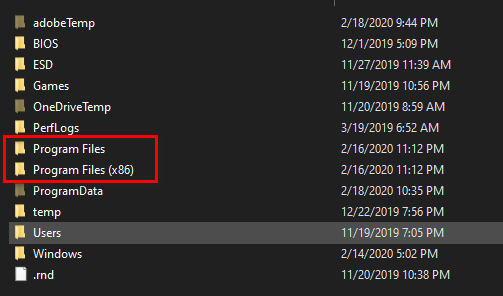
Verifying the Program Files version - Open each folder individually and see which one of them contains the program you’re inspecting. In case the program is installed in Program Files, the binary type is 64-bit. If you find the program in Program Files (x86), the program is clearly built for the 32-bit architecture.
Method 3: Inspecting executable via Notepad++
In case you want to inspect the binary type of a program that wasn’t installed or isn’t signed by a publisher, the easiest way of discovering its binary type by opening the executable with a third party text editor like NotePad++.
As it turns out, you can easily discover the binary type of any executable by opening it via Notepad. Here’s a quick guide with what you need to do:
- In case you don’t have NotePad++ or an equivalent software installed on your computer, install Notepad++ from this link here. Then, follow the on-screen instructions to install it on your computer and restart your computer once the installation is complete.
- At the next computer startup, right-click on the executable (or it’s shortcut icon) and choose Edit with Notepad++ from the newly appeared context menu.
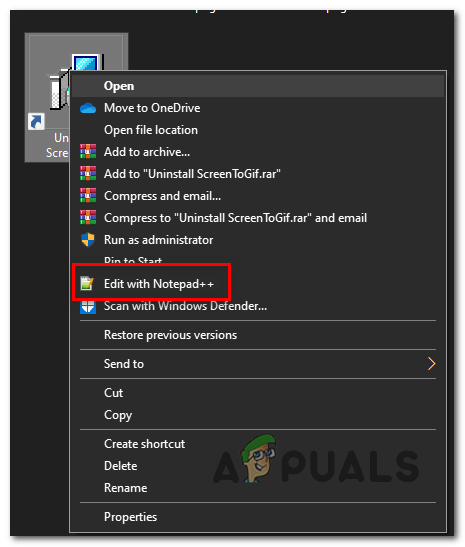
Opening the executable with Notepad++ - Once you manage to get the file opened with Notepad++, press Ctrl + F to open up the Find window.
- Inside the Find window, select the Find tab from the top, then type ‘PE’ under Find what and press Find Next button.
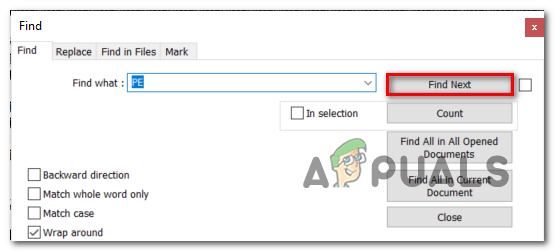
Finding the PE environment - Once the search results are generated, look at the letter after PE. If you see the letter L, it means that the program is 32-bit. In case you see the letter D, it means that the program is 64-bit.
Method 4: Analysing file with VirusTotal
If you’re only looking to analyze a file – not a program that is already installed and uses a background process – the easiest to discover it’s binary type is to upload it on VirusTotal.
Sure, the main use of this process is to determine if the file is infected, but it can be used just as good to discover the PE header’s basic information. The only requirement is to have your computer connected to the Internet.
Here’s how to discover the binary type of a file using VirusTotal:
- Visit this link (here) and click on File, then click on Choose File and select the file that you want to analyze.
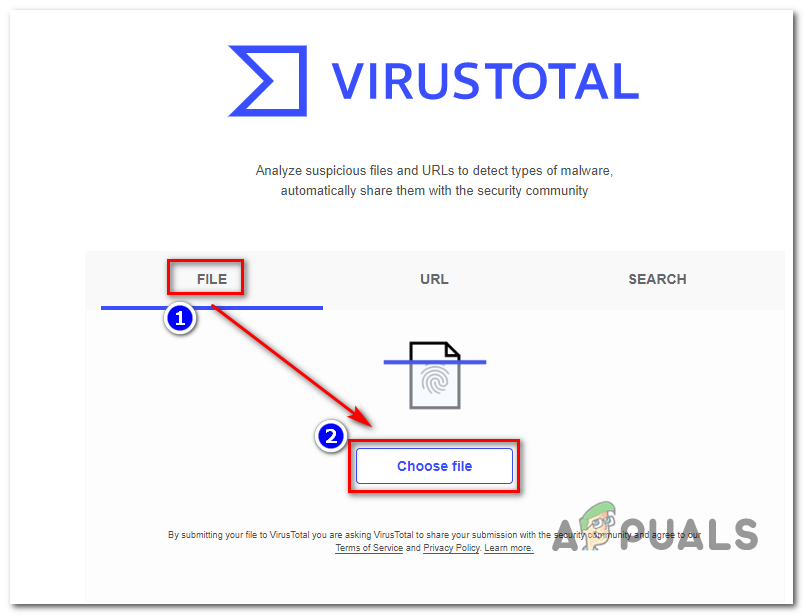
Analyzing the file with Virus Total - Once the analysis is complete, click on the Details tab, scroll down to the PE header basic information and check out the entry associated with the Target Machine. This will tell you if the file is of 32-bit or 64-bit.

